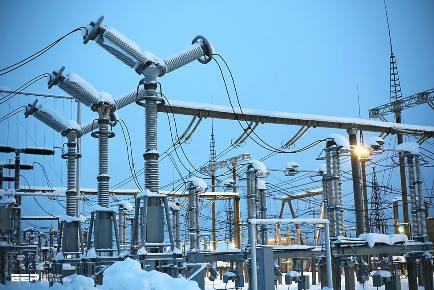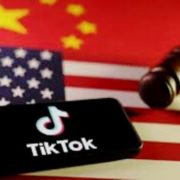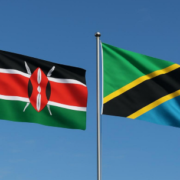By Dada Hammed Togunde, MBA, FCA
The power sector monopoly was transformed into a cartel, with the operators forming an association. In the telecommunication sector, real competition emerged, leading to one operator crashing the price of SIM cards and the introduction of “per-second billing..
The government’s introduction of the Banding-Based Tariff, a term that has left many in the power sector scratching their heads, has sparked many debates. The National Electricity Regulatory Commission’s (NERC) justifications for the ‘Banding Tariff’ have been met with widespread confusion and frustration by many Nigerians, a sentiment I share.
Ideally, the power supply should be a buyer-and-seller customer relationship, not a master-servant favor from the Discos to the power consumers; this fundamental principle seems to have been muddled in this policy. With the regulatory authority’s backing, the unilateral banding of customers and imposition of discriminatory prices or tariffs appear to be a blatant disregard for the Nigerian power consumers.
RELATED: ALTON wants upward tariff review of telecoms services to reflect market realities
In a typical customer relationship, a high volume given customer, like the customers stratified as Band A, should have the privilege of negotiating volume discounts and not the misfortune of punitive tariffs, as is the case with banding-based tariffs. The imposition and reluctant acceptance of the tariff stem from the significant power demand and supply gap and the lack of competition in the sector, resulting from inadequate supply due to official-backed gross inefficiency. It’s high time we prioritize equitable and transparent pricing in the power sector.
The banding-based approach, which appears to be a means of restoring balance due to a structural imbalance in the power value chain, seems exploitative and unfavorable to the masses.
The pricing objective (tariff) for goods and services is to recover the total cost of production and make a reasonable return on investment. While the government has set a tariff that recovers significant production costs of power, the seeming lack of transparency surrounding the dynamics of these costs and the level of return on investment is a source of deep concern for Nigerians. The banding-based approach, which appears to be a means of restoring balance due to a structural imbalance in the power value chain, seems exploitative and unfavorable to the masses. The unbundled structure introduced in the power sector makes it not just necessary, but crucial for the government to help Nigerians understand the tariff structures in the Power Purchase Agreement (PPA).
This information is not just informative but empowering, allowing Nigerians to understand the power sector’s total costs and risk characteristics. Does the Nigeria Bulk Electricity Trading Company (NBET), the off-taker, pay the project company (GENCO) for capacity (Capacity charge) made available and or energy (Energy charge) generated? Is the arrangement with gas and fuel suppliers to the plants a take or pay obligation under the fuel contract? This level of understanding will truly empower Nigerians in the power sector.
The potential failure of the power sector privatization is a stark reminder of the past in the telecommunications sector, particularly the colossal failure of NITEL and MTEL privatization. We have not learned from these mistakes.
Let’s scrutinize the available data to interrogate the credibility and appropriateness of the costs we aim to recover. If the Gencos have an installed capacity of 24,000 megawatts, they can generate 14,000 megawatts. Suppose the Bulk Trader (NBET) gets an invoice and pays for 14,000 megawatts of energy generated as provided in the power purchase agreement. This represents the direct cost of energy to be paid by the final consumers before the costs for transmission and distribution are added. However, due to transmission and distribution constraints, Discos only supplies about 4,500 megawatts to households for billing.
It’s unclear how 4,500 megawatts sales will cover the capital and operation cost of 14,000 megawatts of energy generated and the investment in plant and machinery for 24,000 installed capacity. Furthermore, the 4,500 megawatts are not consistently sustainable due to aged transformers, distribution network instability, technical disruptions, and even rainstorms. There is a significant imbalance. A simple break-even analysis should help us realize we face a severe challenge. We must restore balance and equilibrium and not manipulate the tariff to recover costs. The sector requires substantial investments across the value chain to achieve liquidity, not cutthroat and exploitative tariffs.
The erroneous narrative by the vested interest to justify the misguided and poorly planned privatization of the Power Holding Company of Nigeria (PHCN) successor Generation and Distribution companies was to replicate the success achieved in the Telecommunication sector. Unfortunately, in Nigeria, we do not have the patience for deep policy analysis and evaluation to assist future efforts. Otherwise we would have been adequately guided when the journey to the privatization of PHCN commenced.
Privatization (which has diverse meanings and theories) in Nigeria’s context is simply divestment of government ownership of certain public enterprises as contained in the list in Part 1 and 2 of the first schedule to the Public Enterprises Privatisation and Commercialisation Act for partial and full privatization, respectively, and in the mode prescribed in section 2 of the Act. Specifically, in the telecommunications sector, Nigerian Telecommunications Limited (NITEL) and Nigerian Mobile Telecommunications Limited (MTEL) were the non-performing government-owned enterprises that were slated for divestment but which resulted in catastrophic failure.
The privatization component of the telecommunication sector reform, which was the sale of NITEL and MTEL, failed four times through the International Investment Limited (IIL) led by Chief Bode Akindele winning bid to Orascom, Pentascope Management Service agreement and Transcorp final deals. NITEL was eventually liquidated in 2016 in what was regarded as a guided liquidation.
Those who acquired GenCo and DisCo essentially took local loans to pay for the acquisition. They had probably expected that the vast questionable accumulated receivables in the companies would be quickly recovered to expand the businesses.
The potential failure of the power sector privatization is a stark reminder of the past in the telecommunications sector, particularly the colossal failure of NITEL and MTEL privatization. We have not learned from these mistakes. The enormous growth in the telecommunications sector resulted from a planned and comprehensive reform program, which started in 1992 with the establishment of a regulatory body, the Nigerian Communication Commission (NCC).
In 2001, four new operators, Econet, MTN, Globacom (which failed to meet payment obligation), and NITEL (NITEL license was reserved and transferred to MTEL), won the bid for the Digital Mobile License (DML) in a transparent auction carried out by the Nigerian Communication Commission in collaboration with the Bureau of Public Enterprises (BPE). This heralded the operation of the Global System for Mobile Communication (GSM) in Nigeria. This has no relationship with the Privatisation of NITEL and MTEL, which happened simultaneously.
These new telecommunication operators paid USD285 million each to acquire an ordinary paper document called DML. They did not inherit any asset or cash-generating business (except NITEL). Having paid USD285 million to obtain licenses, the operators had no other option but to quickly raise further funds and deploy services to generate revenue to recoup their huge licenses and service rollout investments.
The exponential growth experienced in the telecommunication sector could be attributed to three factors;
- There was a massive inflow and injection of local/foreign direct investment into the sector by the new entrants.
- New businesses were created in the industry, and the existing ones were expanded.
- The monopoly in the sector was neutralized.
These success factors are absent in power privatization. Those who acquired GenCo and DisCo essentially took local loans to pay for the acquisition. They had probably expected that the vast questionable accumulated receivables in the companies would be quickly recovered to expand the businesses. The power sector also did not lead to the creation of new companies; the existing GenCo and DisCo were just repackaged for sale. I will take the risk to say that the country has equally experienced growth in the power sector, just like in the telecommunication sector, but not yet exponential, and not through the privatized Generation Companies (GenCo) and Distribution Companies (DisCo). Unlike in the past, we now have an improved power mix, and IPP has added more capacity to the Generation.
Forward-thinking organizations like the Dangote group have incorporated power investment into their expansion program. Solar power entrepreneurs are springing up and contributing positively to the country’s power generation. In the telecommunication sector, Econet, MTN, and Globacom were additions to the existing businesses. The power sector monopoly was transformed into a cartel, with the operators forming an association. In the telecommunication sector, real competition emerged, leading to one operator crashing the price of SIM cards and the introduction of “per-second billing.”
The power sector also did not lead to the creation of new companies; the existing GenCo and DisCo were just repackaged for sale.
We should look beyond the constant tariff adjustments for the privatized power companies to the challenges in the power sector and consider the potential benefits of adopting successful strategies from the telecoms sector. The first strategy in telecommunication privatization was that NITEL and MTEL were slated for privatization as a whole and not divided into business units with territorial dominance oligopoly. Secondly, NITEL was initially touted as the National Carrier to carry traffic for the GSM operators; DML initially excluded the transmission. However, when it became apparent that NITEL was not prepared in terms of infrastructure and technical competence for the business plan of the new telecommunication operators, a reversal was made to change the structure. One significant adjustment quickly made in the telecommunication sector was the bundling of generation, traffic, and distribution in the DML. This should inspire us to re-examine the government’s continuous retention of the National Grid (‘Greed’). The ongoing Siemens power grid project should be expedited, and the grid should be immediately privatized.
As far as the sales agreement permits, the privatization of GenCo and DisCo may be revisited as was done in the telecommunication, where the sale of NITEL to Transcorp was revisited. The Nigeria Electricity Regulatory Commission (NERC) should evaluate the prospect and possibility of issuing bundle licenses to new operators in different primary energy sources. Thus, we can issue Solar licenses, Wind licenses, Thermal Licenses, etc., complete with generation, transmission, and distribution as was done for GSM operators. NERC should familiarize itself with the complexities of the power sector, restrict itself to regulatory activities, and rebuild confidence and trust in the power consumers. Finally, there should be proper metering to accurately measure the capacity and energy to be invoiced by power producers to ensure that the government does not take up the cost of corruption and inefficiency in the name of subsidy payment.





























